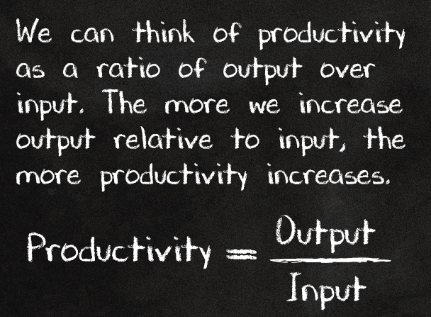5 min reading time
What Is Corrective Maintenance?
4 ก.พ. 2023, 8:29:33

Corrective maintenance (CM) is a maintenance strategy selected for operating fixed assets that are allowed to run to failure. The purpose of the corrective maintenance strategy is to restore the function or condition of the asset into a state in which it can perform a required function. Corrective maintenance tasks are carried out only after fault or failure recognition and they must be planned and executed quickly if the faulty equipment or failed machinery affect the productivity of the company. Productivity is the key for making money. The goal of all for-profit organizations is to make money, and use it for asset refurbishments, replacements or new investments to grow the company. Otherwise the money must be paid back to the owners or shareholders as dividends.
THE PURPOSE OF CORRECTIVE MAINTENANCE
Corrective maintenance strategy is also called as a run to failure strategy where maintenance is undertaken only after machines have broken down or equipment have failed in operation.
The purpose of the corrective maintenance strategy is to restore the function or condition of the operating fixed assets.
Corrective maintenance strategy is selected for operating fixed assets, whose failure is acceptable i.e. there are no significant consequences of failure to the people, property, plant, or equipment, nor the environment. And there are no technically or economically feasible ways to prevent equipment failures or machine breakdowns.
WHY IS CORRECTIVE MAINTENANCE IMPORTANT?
Productivity is the amount of products produced and services delivered (output) divided by the amount of raw materials, energy, labor, and other resources (inputs) used to produce those products and deliver those services.
 SOURCE: U.S. BUREAU OF LABOR STATISTICS
SOURCE: U.S. BUREAU OF LABOR STATISTICS
Corrective maintenance plays a key role by restoring the function or condition of the operating fixed assets back to normal as soon as possible so that operations and sales can continue producing and selling more products and delivering better services to customers. The lack of effective and efficient corrective maintenance will lead to poor operational availability and quality, reduce productivity, and eventually the company will make less or lose money.
THE GOAL OF CORRECTIVE MAINTENANCE
The goal of corrective maintenance is to:
"Reduce the time it takes to restore the function or condition of the assets to minimum."
The goal can only be reached, when operations & maintenance share their strategic objectives and collaborate to achieve their operational objectives that lead the way towards the goal. Operations should notify equipment faults and machine failures as well as report observed hazards and incidents as soon as possible after recognizing these events. Maintenance should take corrective actions quickly to create work orders, schedule CM tasks and allocate spare parts, materials, and resources to execute the CM tasks as fast as possible. Time is money.
KEY PERFORMACE INDICATORS FOR CORRECTIVE MAINTENANCE
There are three basic Key Performance Indicators or KPIs in short:
- Mean Time To Repair (MTTR)
- Mean Time Between Failures (MTBF)
- Mean Time To Failure (MTTF)
Mean Time To Repair is a Key Performance Indicator (KPI) of corrective maintenance. MTTR is a measure of the maintainability of repairable assets. It is the average time spent to repair failed machinery and equipment. As a formula it is the total corrective maintenance time spent repairing machinery and equipment divided by the total number of corrective maintenance tasks executed during a given period of time. It generally does not include lead time for spare parts or materials not readily available or other administrative or logistic downtime.
Mean Time Between Failures or MTBF in short is another KPI of corrective maintenance for reparable assets. MTBF is the arithmetic mean or average time elapsed between failures of an asset.
For example battery driven IoT-sensors have a mean time between battery replacements. Failed batteries are replaced with new ones.
Mean Time To Failure in short is yet another KPI of maintenance. MTTF indicates the expected time to failure for a non-repairable asset. It is the arithmetic mean or average life-time of similar failed assets.
For example battery driven IoT ATEX -sensors have a mean time to failure. Failed batteries are not replaceable due to ATEX requirements concerning the IoT ATEX sensor design.
CORRECTIVE MAINTENANCE STRATEGY
Corrective maintenance is one of the three maintenance strategies selected by business owners, executive directors, or business management teams for the realization of the maintenance of the operating fixed assets of the company.
There are two main corrective maintenance types:
- deferred corrective maintenance; and
- immediate corrective maintenance.
Immediate maintenance is also called as emergency maintenance.
WHAT IS THE RIGHT CORRECTIVE MAINTENANCE STRATEGY?
Well, it depends ...
When you acquire new property, plant, or equipment their manufacturers predetermine the preventive maintenance actions to be taken in order to keep their warranty valid so in practice you have to follow the manufacturers' preventive maintenance plan at predetermined service intervals. However, after the warranty period has expired it's up to you to decide whether you want to keep following the manufacturer's original maintenance strategy or change to another one.
Deferred corrective maintenance may be a good option, if the asset in question is not critical to your operations and not too expensive to repair or replace. You just let the asset run to failure before you maintain and repair it. Just make sure that you'll have plenty of time to plan and execute the corrective maintenance tasks at a later date.
Immediate "emergency" maintenance must be avoided as much as possible because it is the most expensive type of maintenance. Emergency maintenance tasks are often planned in a hurry or not planned at all and therefore emergency maintenance is inefficient and expensive. Many times as expensive as well-planned preventive maintenance.
The most expensive type of maintenance is emergency maintenance
You should ensure that no more than 1 - 2 % of your total maintenance is emergency maintenance.
However, if the asset in question is critical to your operations and its failure could stop operations, or it could cause damage to other property, plant, and equipment, people or the environment, or it would be very expensive to repair, you might want to choose a preventive maintenance strategy.
Selecting maintenance strategies is not easy. But we can help.
Blog Posts
What are Maintenance Types?
Some businesses are still running their fixed operating assets to failure and their maintenance is...
What is a Maintenance Strategy?
A maintenance strategy can play a key role in improving the availability, reliability, and quality...
What Is the Maintenance Process?
Maintenance managers are struggling to execute the maintenance strategy and to achieve the...

